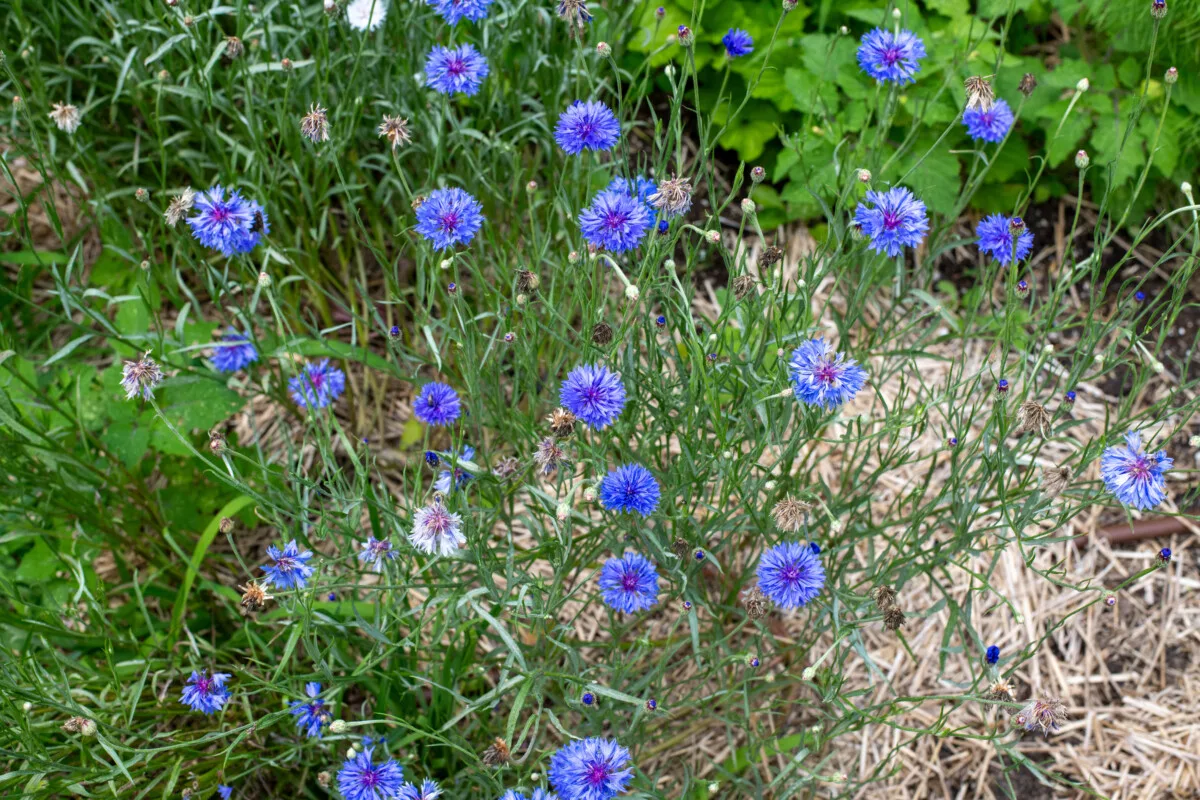
Whether you know them as bachelor button, cornflower or blue bottle, no cottage garden is complete without these blue flowers swaying on the breeze.
With their shaggy blooms, bachelor buttons add homespun charm as few other flowers can do. And they’re easy enough for even the most novice gardener to grow.
If your garden is awash in pinks, reds, oranges and yellows, and you’re looking for a pop of blue – look no further than this charming flower.
Bachelor’s Button – Cornflower – Bluebottle
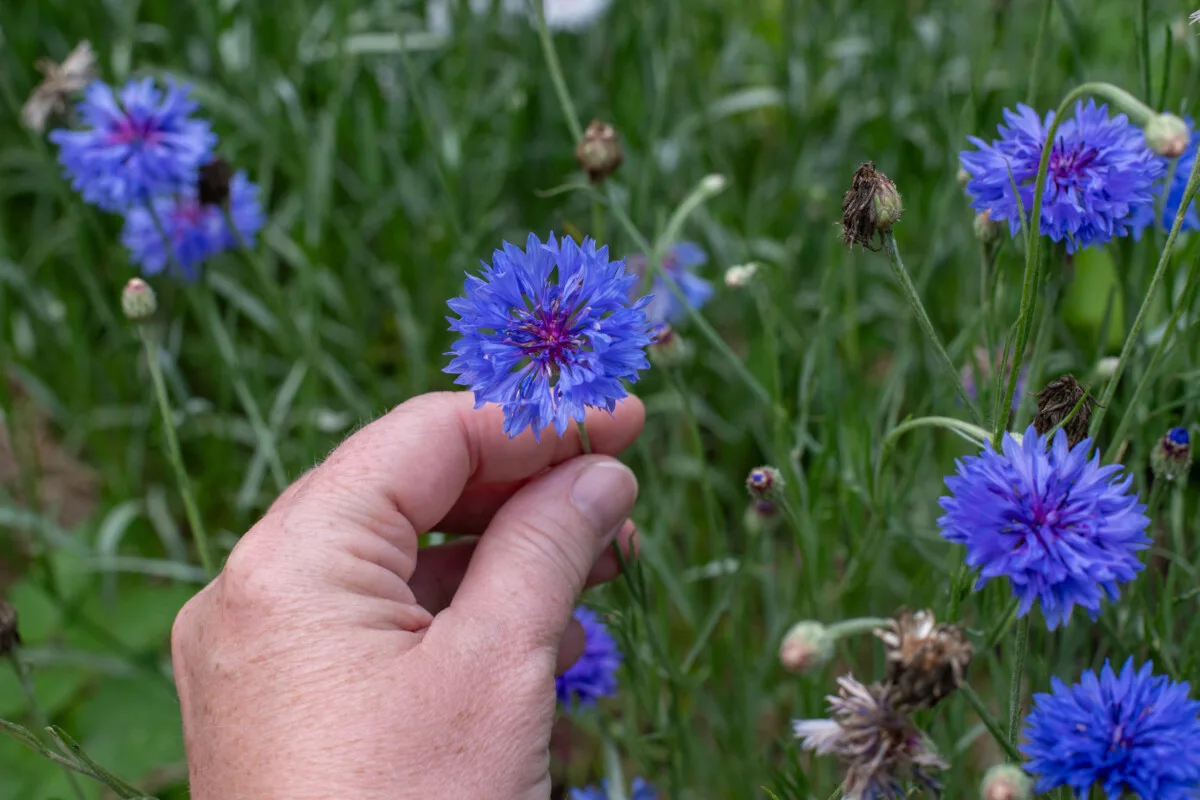
Centaurea cyanus, or cornflower, as it’s also known, isn’t a native to the States. The meadow flower we all know and love is from Europe. This lovely blue flower is a cautionary tale, as it’s now endangered in its native home because of intensive herbicide use in commercial agriculture over the decades.
Bachelor button is naturalized here in the States, Australia, and other parts of the world. Meanwhile, the UK works to actively bring this bright blue bloom back from the brink at home.
There are numerous reasons why the humble bachelor button deserves a spot in your garden or landscape.
1. Easy to Grow
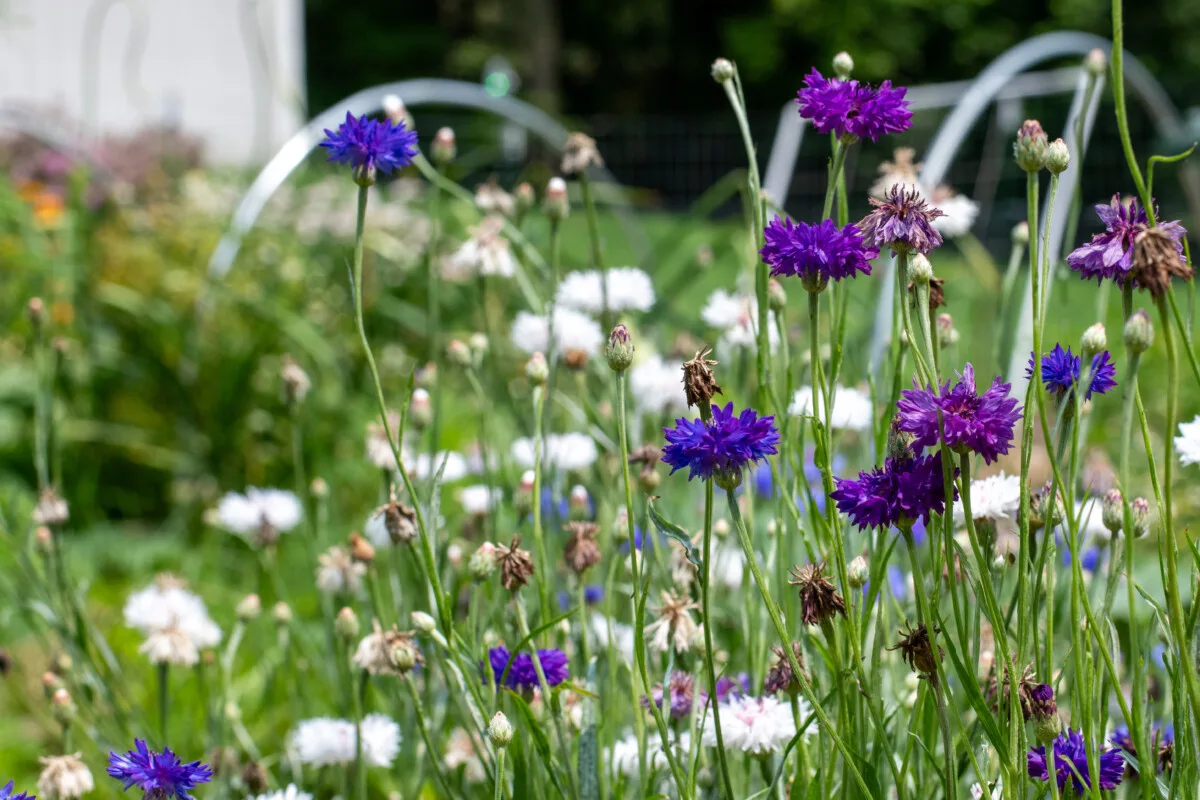
Whether you start them from seed indoors, direct sow them or buy nursery starts, bachelor buttons are easy to grow. The seeds are easy to germinate, and seedlings handle transplanting well. They’re also quite unfussy about soil conditions, and while they prefer sandy loam, they will grow in even poor soil. It’s this characteristic that has allowed them to dot the landscape of nearly all fifty states. (Sorry, Alaska.)
2. One Tough Flower
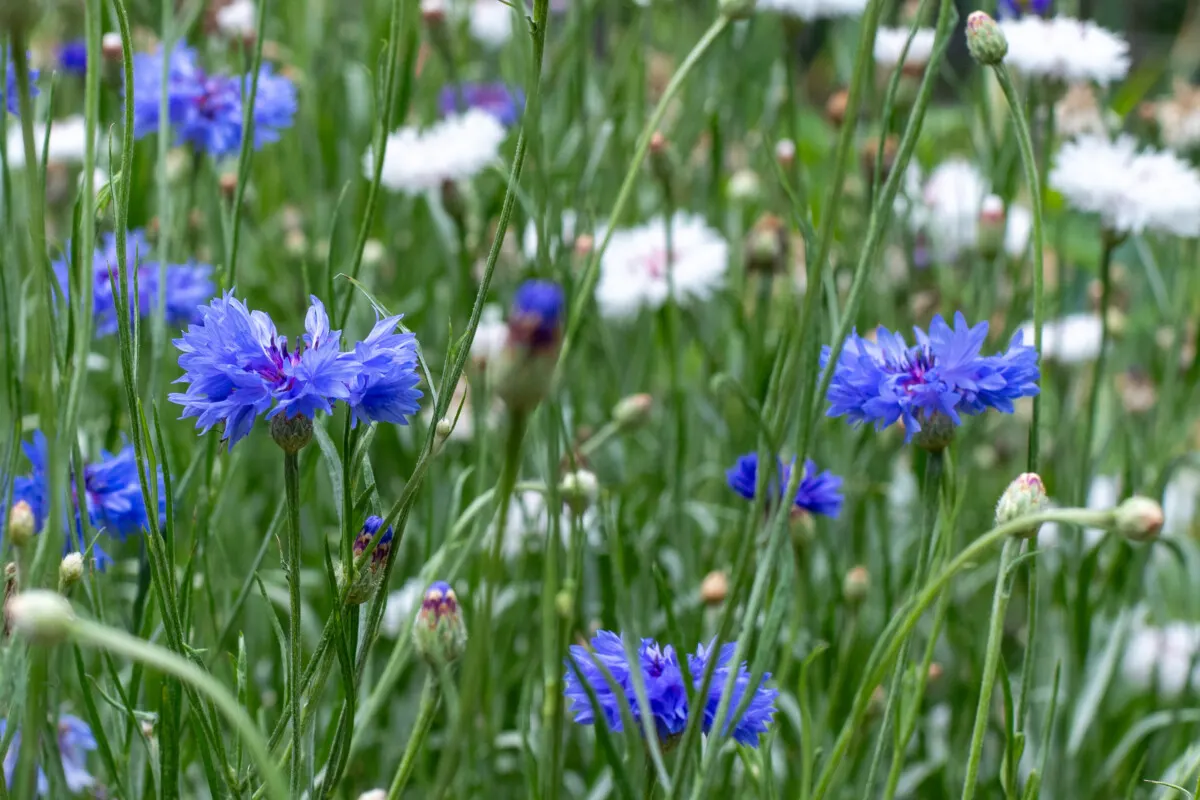
Don’t let their delicate appearance fool you. You’d be hard-pressed to find a hardier summertime bloom. Crappy soil? Grow where you’re planted, baby. Heavy winds and rain from summer storms? Still standing tall, still gorgeous. Extreme heat and drought? Pfft, you wish you looked this good in this heat. Frost hardy? Honey, I can handle -20F, and they call me an annual.
Despite their fragile appearance, I’m always amazed at how rugged these flowers are.
When I planted my seedlings in the garden this spring, I came out a few days later to find them all yanked up and pitched in the yard. I may have accused the Sweetheart of “weeding.” (Turns out it was rabbits; sheepish apologies were made by me while my sweetie put up rabbit fencing around the garden.) I picked up all the seedlings, plunked them back in their holes and watered them well. All of them survived and are thriving.
3. Disease and Pest Free
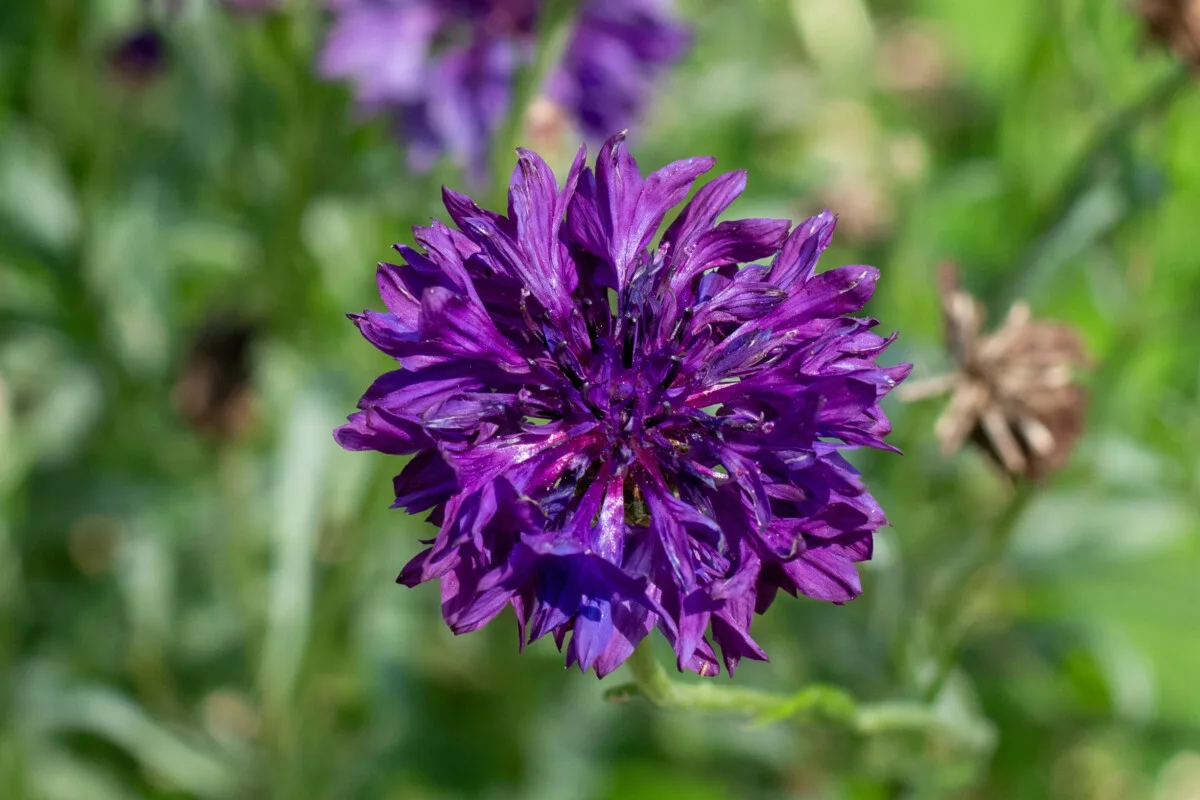
If you’re tired of wondering what’s eating your plants or what that weird spot is on the leaves, plant bachelor buttons. These sturdy little flowers have almost no disease or pest issues. On occasion, they can pick up powdery mildew or aphids; in either case, it’s rarely a major issue.
4. Low Maintenance
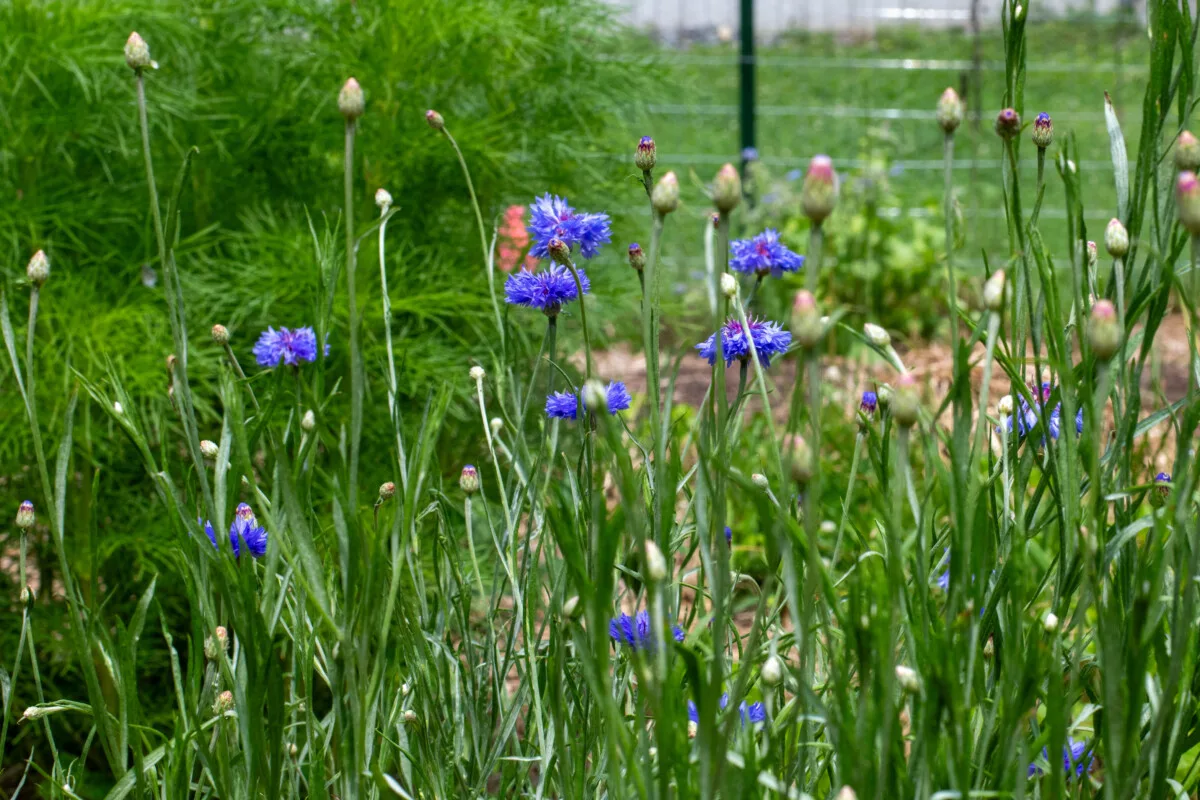
These blue blooms are perfect if you want abundant flowers without the hassle of pruning, deadheading, and special fertilizers. Once established, the bachelor button is truly a set-it-and-forget-it flower. They’ll take care of themselves. Most grow so prolifically that the only maintenance you might need is pinching them back occasionally.
5. Not Just Cornflower Blue
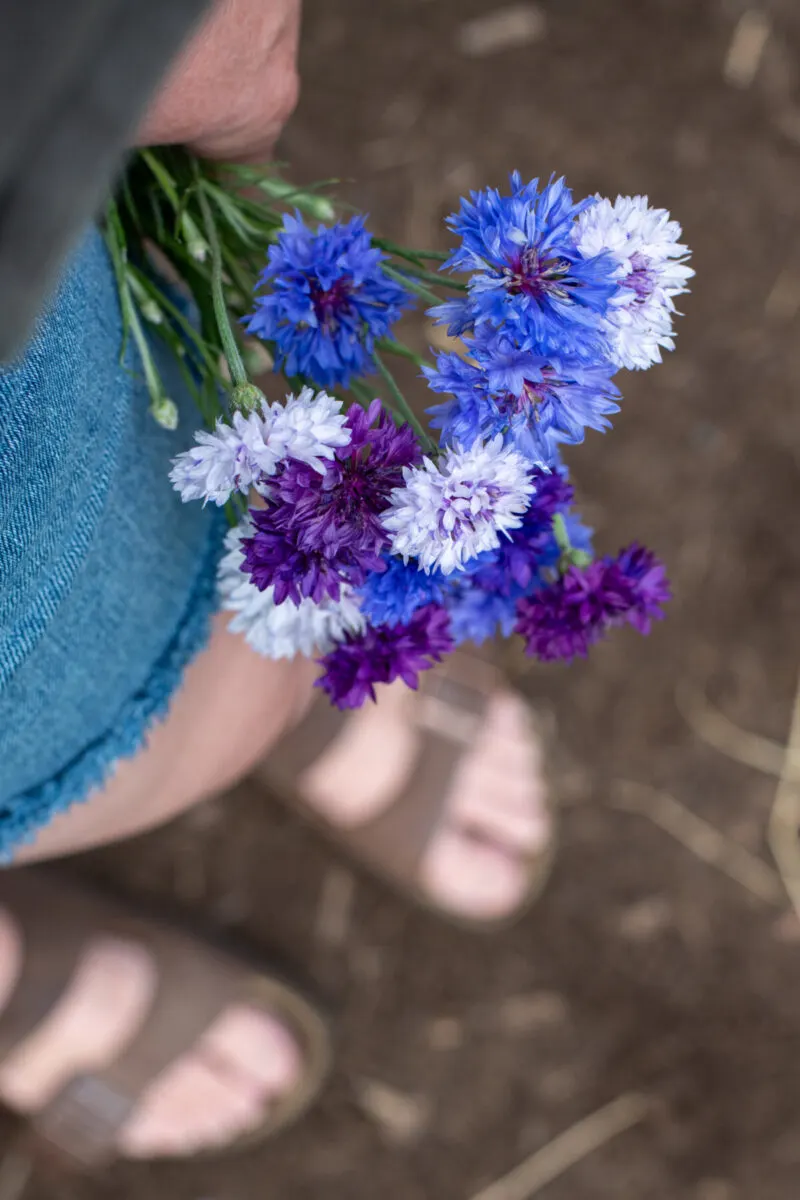
Despite cyan being in their name, these flowers come in various shades. From the traditional cornflower blue to white, pale pink, magenta and purple, the bachelor button comes in many cool colors to compliment the warmer tones of most summer flowers.
6. Fill Sparse Areas
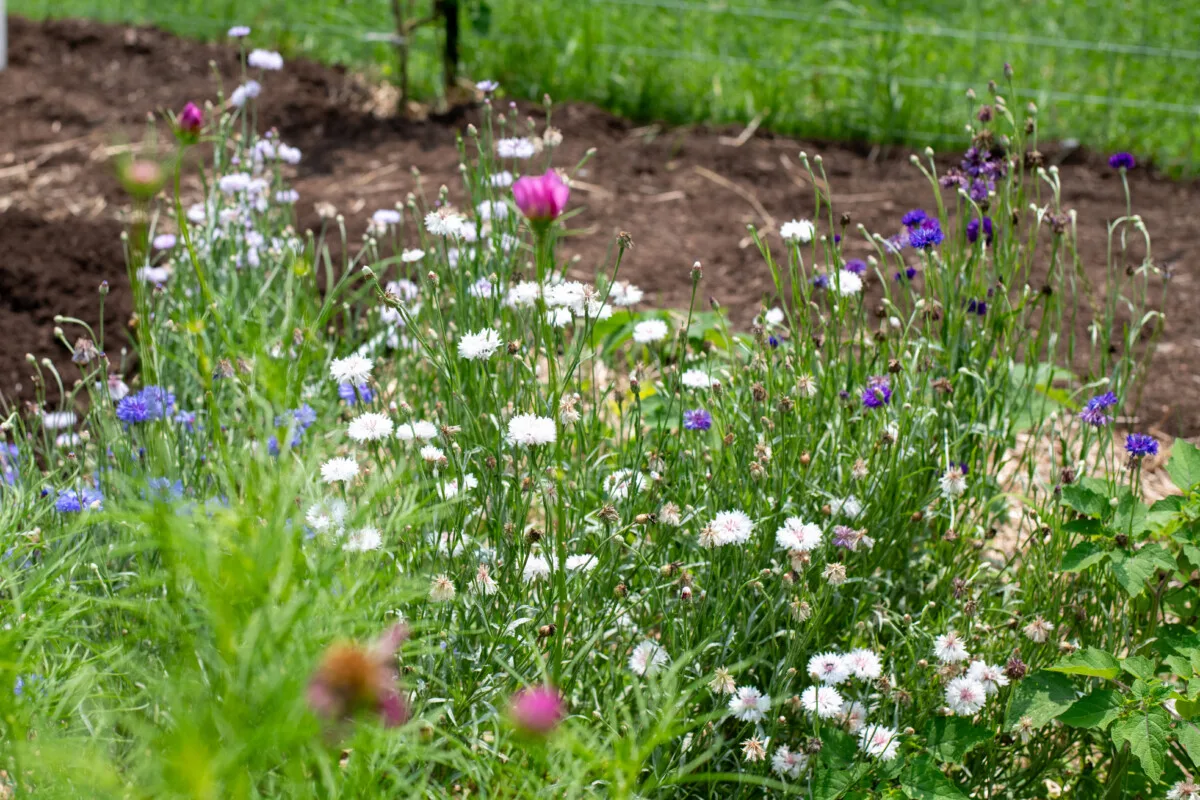
Aside from offering beautiful flowers with equally attractive foliage, bachelor button is a great choice to fill in sparse areas that need color. The plants will fill in and spread quickly, even within a season. This plant looks great as a border along buildings, fences or stone walls. Plant bachelor buttons if you’ve got bare ground and want to keep weeds out.
7. A Pollinator Favorite
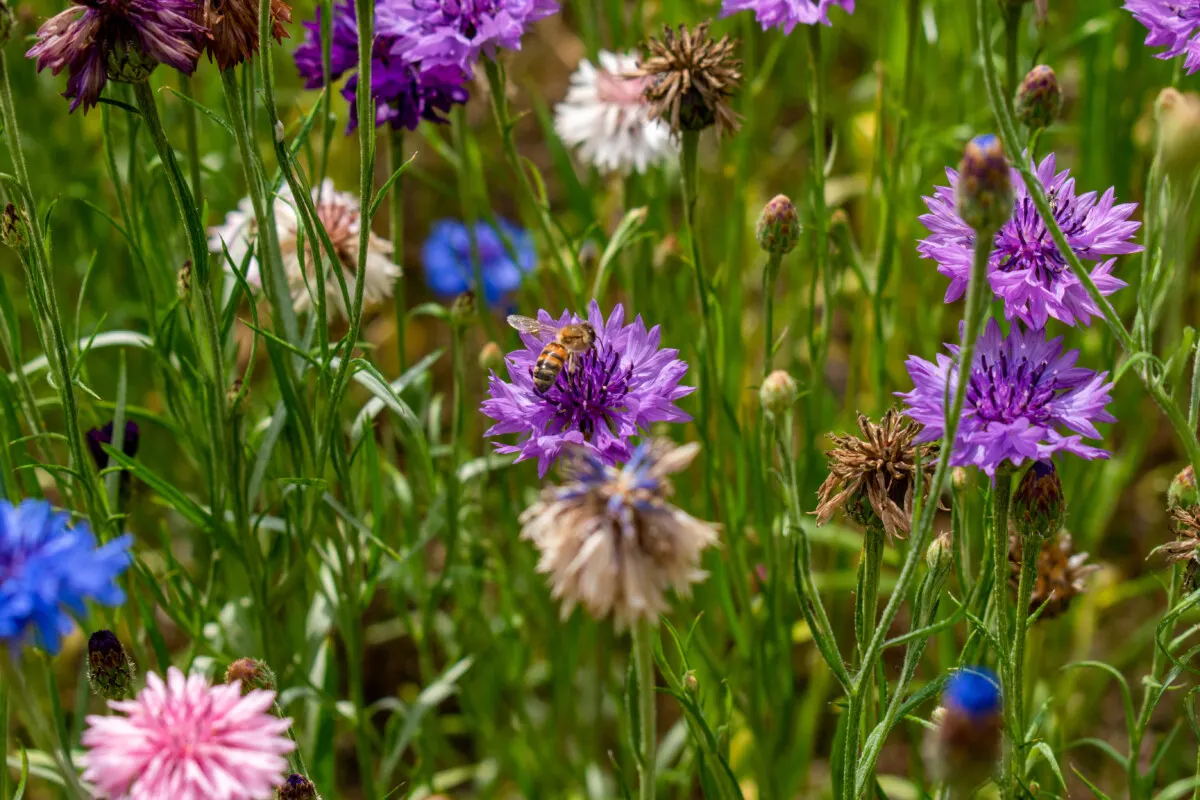
As soon as the sun hits my bachelor buttons, they are alive with the buzz of native pollinators. The bachelor button is a great choice if you want to add flowers to your garden or landscape that will attract pollinators. The nectar of bachelor buttons is especially sweet, making it a great flower to grow if you keep bees.
8. Bachelor Button – Fruiting Vegetable Companion Plant
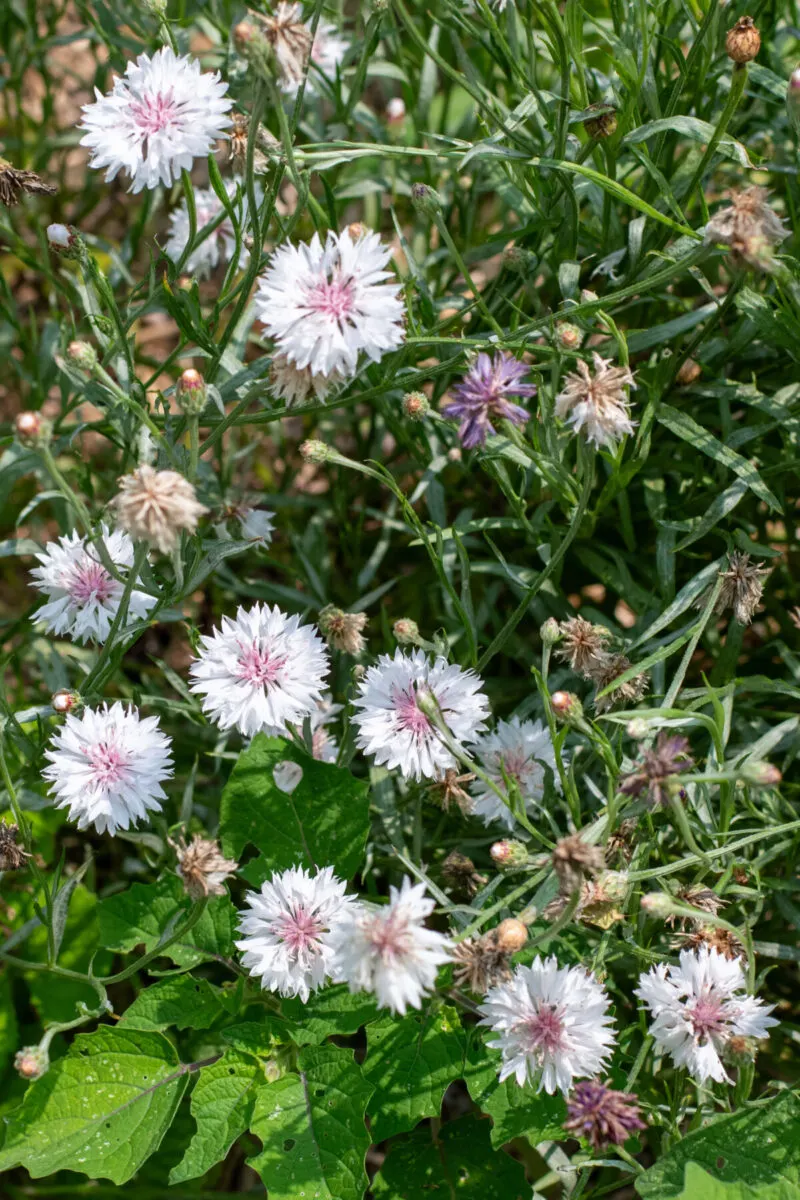
In the same vein, vegetable gardeners, if you struggle with pollination issues in your garden, put in a few bachelor buttons. Your squash, tomatoes, peppers, cucumbers and other flowering vegetables will thank you with abundant fruit.
Bachelor buttons attract numerous predatory insect species, such as ladybugs and lacewings. If you struggle with pest issues, plant bachelor buttons to attract an army of pest-eating insects.
9. A Lovely Cut Flower with Big Rustic Charm
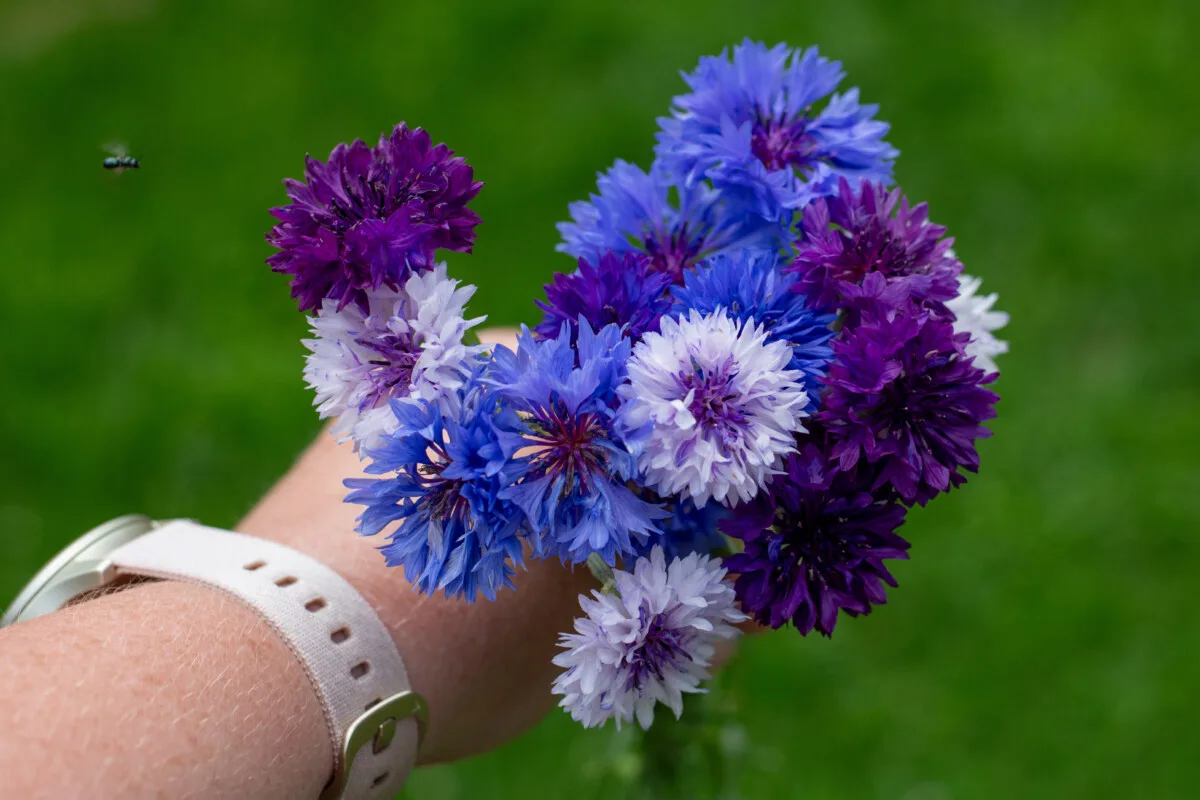
If fresh-cut flowers are a part of your summer gardening efforts, be sure to include bachelor button. While their stems need a light hand so they don’t snap, the shaggy flowers are a perfect addition to any cut flower arrangement. The blooms last surprisingly well, looking lovely even as the pigment in the petals fades.
Their gorgeous silver-green foliage is the perfect filler to make the blooms stand out. Add a few stems with unopened buds to your arrangement for visual interest, and the buds will bloom even after being cut.
How to Grow Bachelor Buttons
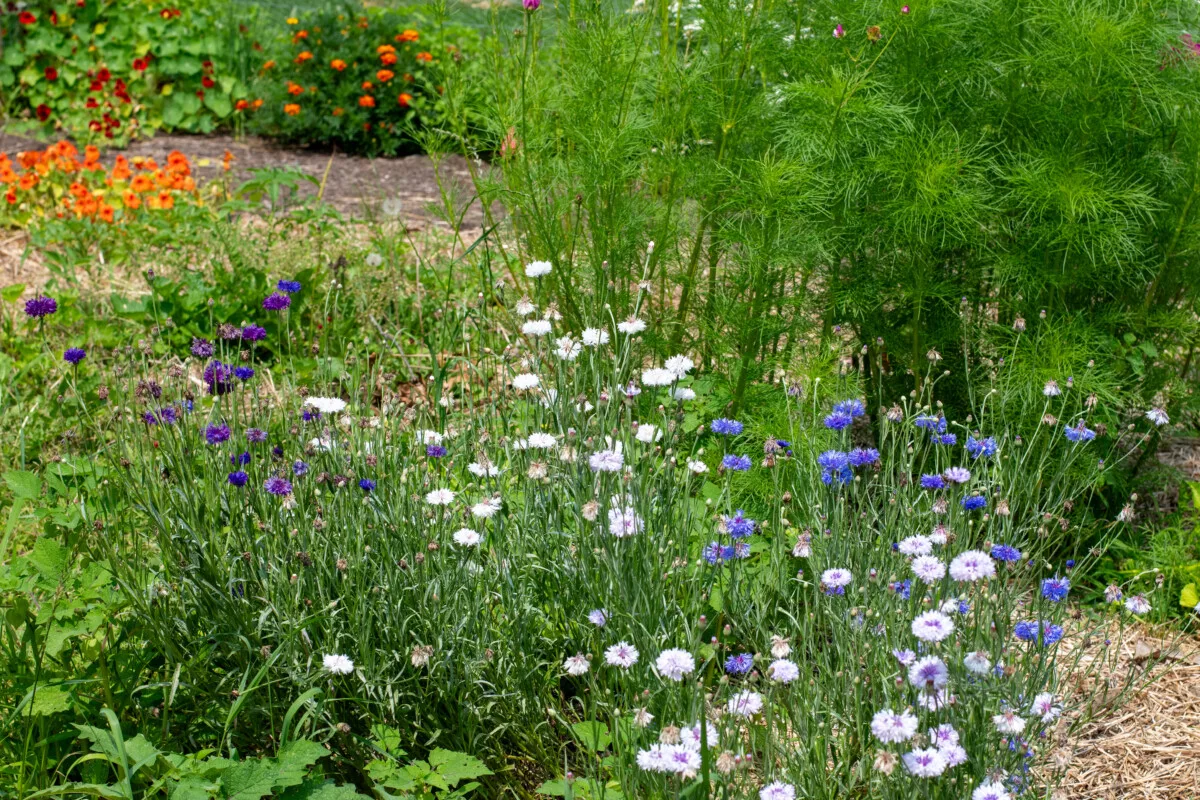
Start bachelor buttons inside from seed roughly four weeks before your last frost. Alternatively, you can sow them directly in the fall if your winters don’t drop too far below 0F. Transfer outside after all danger of frost has passed and you’ve hardened them off for a week.
As we’ve already discussed, bachelor buttons aren’t picky about soil and will grow almost anywhere. If you want to make them extra happy, add a trowelful of compost in the hole before you plant them.
Choose a spot for your bachelor buttons where they will receive full sun for at least six hours a day to get the most blooms. In especially hot climates, plant them where they will receive some afternoon shade.
Water them frequently until they’re established. Once they have started to grow well and have a good root system, they rarely need watering other than rain. Only in severe drought conditions will they need a helping hand from you.
Give them plenty of room to sprawl, and don’t crowd them together. A single plant will grow between two and three feet tall and about a foot and a half wide. They will continue to spread throughout the growing season if you let them, although you can prune them quite hard without hurting the plant.
While fertilizer generally isn’t necessary, if you wish to get more blooms, use a fertilizer with extra phosphorous once you notice buds forming.
Bachelor button begins setting buds once temperatures are consistently in the 50s and will continue blooming until cold weather returns.

Get the famous Rural Sprout newsletter delivered to your inbox.
Including Sunday musings from our editor, Tracey, as well as “What’s Up Wednesday” our roundup of what’s in season and new article updates and alerts.

